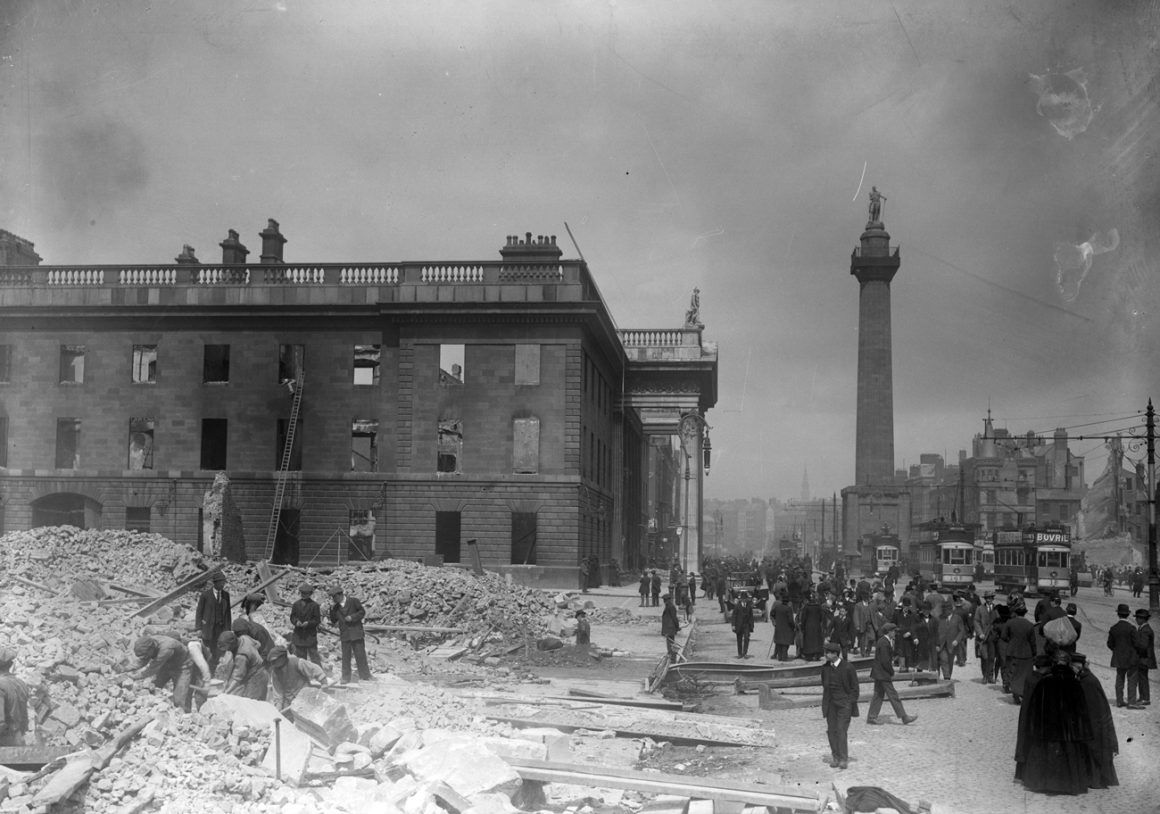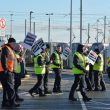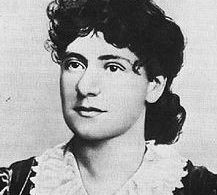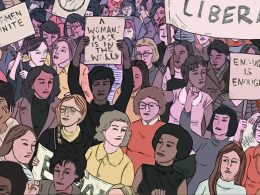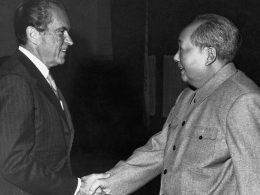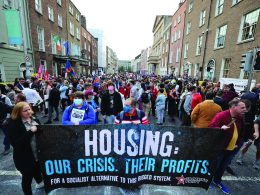Below is the edited text of an article on the 1916 rising that appears in the latest edition of “The Socialist”, the monthly paper of the Socialist Party. We will be producing a lengthier analysis of this period of Irish history in a forthcoming booklet.
By Cillian Gillespie
This weekend will mark the centenary of the Easter 1916 rising against British rule in Ireland.
For many working class people this event is regarded as a key defining event in Irish history with its participants and leaders held in high esteem.
Their actions today are viewed as a real blow to Ireland’s historic colonial masters. Over the course of one week a small force took on the military might of the British Empire, which at the time, constituted the largest imperial power in the world. A significant proportion of the forces of both the Irish Citizens Army and the Volunteers were working class in their composition or from lower middle class backgrounds.
While the capitalist establishment in the South is more than willing to celebrate the rising in this centenary year, their forebears took an altogether different attitude surrounding the rising and those who participated int it. Nowhere is this more exemplified than in an editorial that appeared in the Irish Independent on May 10, 1916, with a picture of James Connolly beside it, which called for ‘’…the worst of the ringleaders [to] be singled out and dealt with as they deserve.’’
A mortally wounded Connolly was executed two days later. The paper’s proprietor, William Martin Murphy, leader of the 404 bosses that had locked out Dublin’s working class in 1913, had effectively campaigning for his execution. It was only after this was carried out that the paper called for clemency.
In the North, the rising is a more divisive question reflecting the broader clash of aspirations in terms of the national question amongst the Protestant and Catholic working class people. Notwithstanding the much hyped talk of peace and reconciliation over the last quarter of a century capitalism has proven itself incapable of providing a solution to this conflict. History, like many aspects of Northern society, has become a sectarian battleground.
Britain’s oldest colony
Ultimately the rising had its roots in the oppression by British imperialism that had stretched over several centuries. This colonial oppression of Ireland had not only resulted in the denial of its right to political freedom and independence, but also its economic strangulation.
This was firstly done by destroying Ireland as a competitor to British capitalism in the aftermath of the Act of Union of 1801. Mass emigration from Ireland, particularly in the years of the famine of the mid-19th century, also served to also create a cheap pool of labour for its industrial cities and satanic mills. Ireland also became Britain’s “bread basket” and would provide raw agricultural products, mainly meat to feed these same cities.
It was for this reason that James Connolly wrote shortly after his arrival in Ireland that:
“The struggle for Irish Freedom has two aspects: it is national and it is social.”
In order to maintain its’ rule and economic exploitation of Ireland, the British ruling class sought to ferment and foster sectarian division. In reality it was on this island that they perfected the tactic of “divide and rule” that they would later utilise in their other colonies throughout the globe.
Connolly argued that only a revolutionary movement of the working class that united both Protestant and Catholic workers, and linked with the struggle for a socialism could end Ireland’s colonial domination.
Connolly and the rising
Alongside Jim Larkin, Connolly played a critical role in the battles of the Irish workers’ movement in the aftermath of the founding of the Irish Transport and General Workers Union in 1909. This culminated in the Dublin Lockout of September 1913.
While not an outright defeat, the outcome of the dispute did cut across the momentum that the ITGWU and Irish workers’ movement generally had developed prior to 1914. Two other events were to have a negative impact of the development of the workers movement in this same year.
The first was the danger of partition which was being openly discussed by sections of the British ruling class, Connolly foresaw this as an inevitable “carnival of reaction”. Such a scenario, as history would later prove, would result in the increase in sectarian division between working class people to the benefit of imperialism and capitalism.
In August 1914 another catastrophe befell the workers’ and socialist movement in Ireland and throughout Europe with the outbreak of the First World War. This was a war fought between the capitalist states of Europe over whose respective ruling class would maximise their profits through control over the world market. This event, in and of itself, may not have come as a surprise to socialists such as Connolly, but the support given to it by the official leaders of the socialist movement certainly did.
In violation of the basic principles of working class solidarity, they shamefully rallied in support of their own ruling classes in a war that would result in the killing and maiming of millions of working class soldiers and that was, up until that point, unprecedented in its barbarity.
While Irish Home Rule leader, John Redmond – whom the present government have seen fit to celebrate on a large scale banner in Dublin’s College Green – rushed to support the war and advocate that members of the Irish volunteers should enlist in the British army, Connolly wrote that:
“Ireland may yet set the torch to a European conflagration that will not burn out until the last throne and the last capitalist bond and debenture will be shrivelled on the funeral pyre of the last war lord.”
Road to rebellion
As the bloody carnage of the war dragged on, Connolly was driven by a burning desire to strike a blow against the capitalist and imperialist order in Europe. However, Connolly was isolated in Ireland, with no direct links to other revolutionary socialist leaders who stood against the imperialism war slaughter, such as Lenin and Trotsky in Russia, Rosa Luxemburg, Karl Liebknecht in Germany, and John Maclean in Scotland, and affected by the consequences of the defeats of 1914.
During the war, Ireland was not immune from the jingoism that had developed across Europe and many working class people in Ireland, including those who had been blacklisted as a result of the Lockout, were economically conscripted into the British Army. Linked with this was the looming threat of actual military conscription being introduced in Ireland as it had been in Britain.
It was in this context that Connolly became increasingly desperate to see some kind of rebellion take place in Ireland and in the absence, at that stage, of a mood for rebellion among broader sections of the working class, he looked to the forces of militant nationalism. These forces took the form of the Irish Republican Brotherhood (IRB) and those sections of the Irish Volunteers who had refused to heed Redmond’s call to support the British military effort.
The IRB’s maxim had been that “England’s difficulty was Ireland’s opportunity”. It had been preparing in secret for a rising since the outbreak of the war. In January 1916, Connolly was co-opted on to the military council of the IRB to prepare for a rising to take place at Easter.
Easter rising
On Easter Monday 1916, an estimated 1,300 Irish Volunteers, 220 members of the Irish Citizen Army and a few dozen Hibernian Rifles seized control of the centre of Dublin. They declared an ‘Irish Republic’, erected barricades and waited for the inevitable assault from British forces.
For one week, the insurgents stood firm even though they were outnumbered by twenty to one. They were quickly surrounded and shelled mercilessly resulting in the horrific destruction of much of Dublin City and civilian deaths. By the end of the week they were forced into an unconditional surrender. Sixty rebels, 120 British troops and 450 civilians lay dead, with more than 2,500 injured.
Factors such as the countermanding order to the Irish Volunteers by Eoin McNeill on Easter Sunday and the seizure of the German submarine, the Aud, which contained 20,000 rifles, off the south coast did cut across the scale and intensity of the fighting that took place. However, ultimately the rising was doomed to failure from the outset given that there was little mood or support for such an action amongst the population at large.
Connolly, in the run up to and during the rising itself, made political concessions to the forces of nationalism he was fighting alongside. This is best reflected in the Proclamation he put his name to, which is, notwithstanding the positives sentiments it contains, is a nationalist document.
Having decided to participate in the rising, it would have been better if Connolly had put out a separate socialist document that outlined his vision of a “Workers Republic”, where its wealth and resources would be under the democratic ownership and control of the working class.
The lost revolution
The courage and self-sacrifice displayed by Connolly (and indeed the others who fought in the rising) cannot be disputed. However, the prematurity of the rising can be seen by looking at events that followed it. In the opening chapter of his celebrated work Labour in Irish History, Connolly had written that:
“Revolutions are never the by-products of our minds but of ripe material conditions”
While the “material conditions” for a socialist revolution against British and Irish capitalism had not developed by 1916, the impact of national and international events in the period following 1917 made such a revolution a real possibility. The outbreak of the Russian Revolution and the revolutionary wave that swept Europe had a deeply radicalising effect on the working class on this island.
This radicalisation had an effect not only on the south, where opposition to British imperialism began to harden in the aftermath of the rising, but also amongst Protestant and Catholic workers in the North. This resulted in a whole series of local and national general strikes, in “soviets” (democratic workers councils) being proclaimed and in some cases taking control of cities such as Belfast and Limerick and the development a pro-socialist outlook within society.
The absence of a revolutionary socialist leadership, which could unite the working class and these movements in the struggle for socialist change meant that the revolution of this period gave way to the counter-revolution of partition. The tragedy of Connolly was that he did not live to see these events and therefore play the necessary role in building such a leadership.
Contrary to the mythology purported by today’s political establishment and mainstream historians, the “revolutionary period” of 1916 to 1922 did not give way to a positive outcome for working class people. What was created were two oppressive, sectarian states that failed to deliver for the needs of working class people, and still do to this day.
It is for these reasons that we must learn from the past and strive to construct a socialist movement that can deliver the real change that working class people need.





